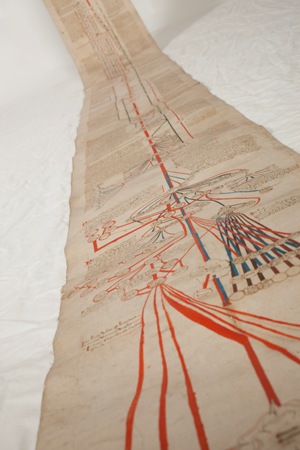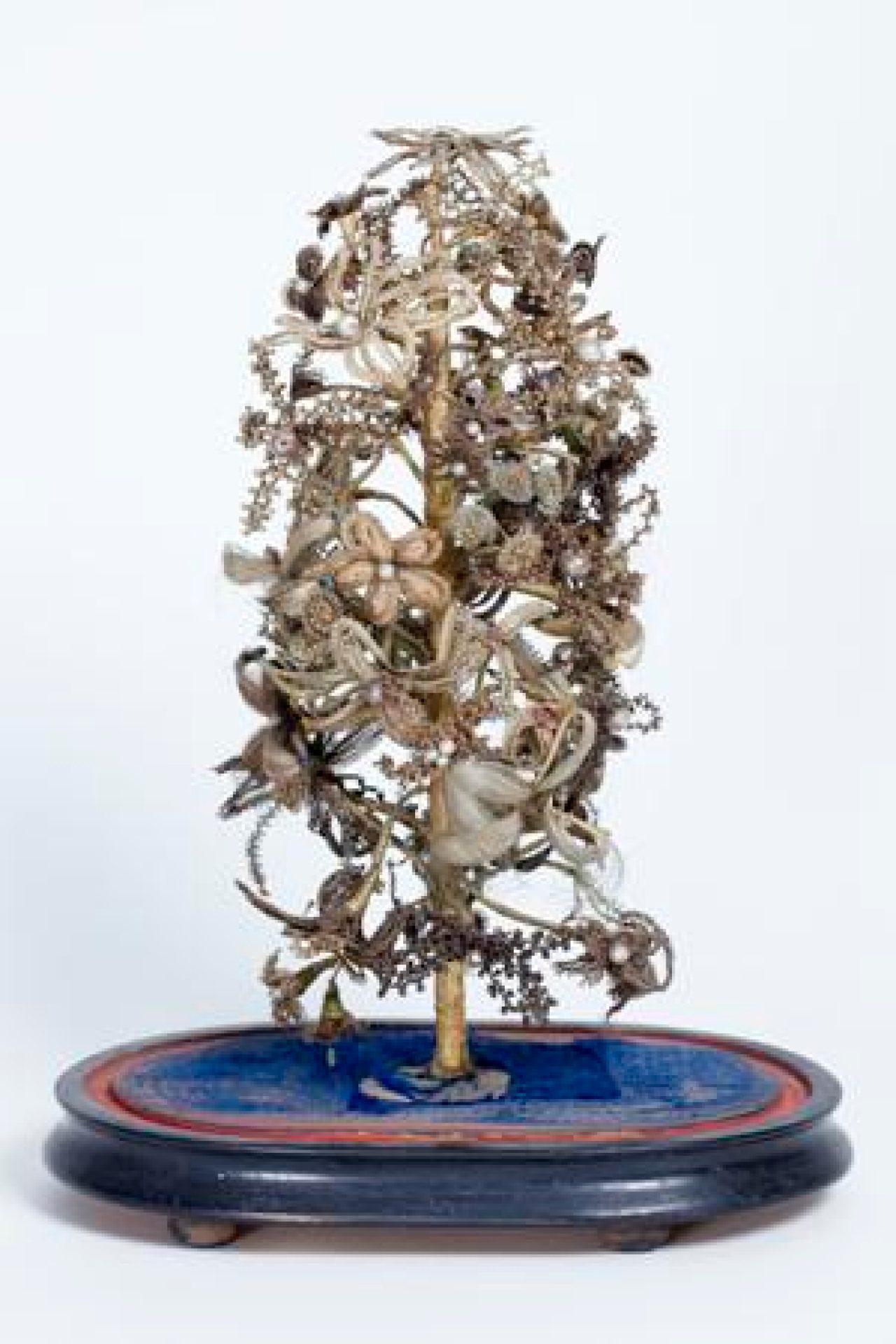For centuries, researchers and amateur genealogists have been occupied by the search for detailed family histories. These histories have various purposes. They may seek simply to enhance knowledge of what came before; to increase our understanding of our ancestors’ culture; to identify medical issues; or to trace and document a significant lineage. Family history representations come in various oral, written and artistic forms and both of these examples are highly illustrative in their very different ways.

From Myth to History

The Canterbury or 'Maude' Roll
England, c. 1429-38 with later modifications the last of which were made c. 1483. A genealogical roll comprising six pieces of parchment joined at length on a canvas backing and rolled
Christchurch, University of Canterbury, MS 1
The Canterbury Roll is a masterpiece of medieval European craftsmanship. Brought to New Zealand in the nineteenth century by the family of Sibylla Maude – famous as ‘Nurse Maude’ for her role in establishing district nursing in New Zealand – the roll’s earlier history is shrouded in mystery. Beginning with the biblical descendants of Noah, the roll then unfolds the history of Britain’s rulers over nearly five metres of parchment.
Ranging from such mythical figures as King Arthur to England’s Norman conquerors and Wales’s last princes, the roll concludes with the late-fifteenth century English ruler Edward IV. It is probable that the original owners unfurled the roll to demonstrate their political loyalties or the closeness of their family connections to the ruling dynasty.
This mid-nineteenth-century ornamental family tree is made predominantly of human hair. The fashion for using hair as an element of remembrance flourished in the Victorian era as mourning relatives preserved locks of hair of their deceased loved ones in jewellery and artwork. Other decorative elements were often used, including an image of the loved one or pearls to symbolise the tears of loss. The hair of this particular tree comes from members of the Painter family of Southland and the locks of hair of each member of the family were arranged in a 'family tree' for the succeeding generations to keep.
Want to know more?
Chris Jones, 'The Canterbury Roll', in Treasures of the University of Canterbury Library, ed. by Chris Jones & Bronwyn Matthews with Jennifer Clement (Christchurch: CUP, 2011)

Floral decoration 'Family Tree' style, made from human hair in the mid-nineteenth century
Canterbury Museum, EC67.430